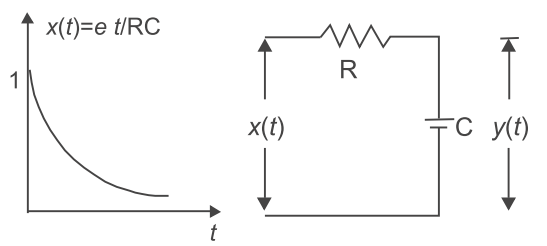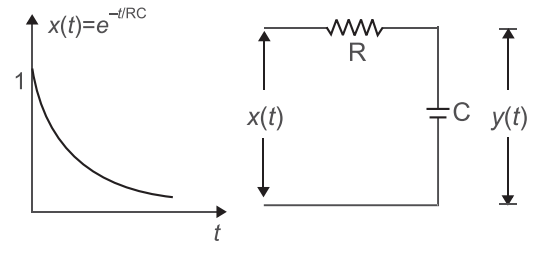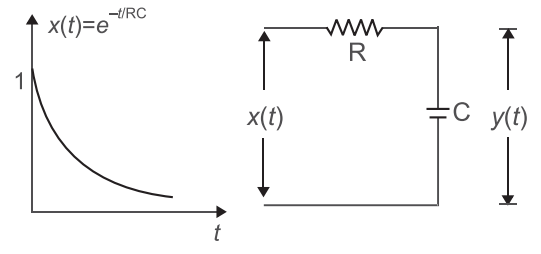Signal and systems miscellaneous
- For the question 88, what will be the inverse z-transform for
ROC 1 < |z| < 3 2
-
View Hint View Answer Discuss in Forum
Here, the ROC 1 < |z| < 3 is a ring, 2
which means that the signal x(n) is two sided. Therefore, one of terms corresponds to a causal signal and the other is anti-causal signal.In the region 1 < |z| < 3 2 i.e., |z| < 3 anti-causal and |z| > 1 causal, 2 the pole p1 = 1 is interior and p2 = 3 is exterior and hence 2 X(n) = 2 δ(n) + 
1 
n u(n) – 1 (3)n u(– n – 1) 3 2 3
Hence, alternative (B) is the correct answer.Correct Option: B
Here, the ROC 1 < |z| < 3 is a ring, 2
which means that the signal x(n) is two sided. Therefore, one of terms corresponds to a causal signal and the other is anti-causal signal.In the region 1 < |z| < 3 2 i.e., |z| < 3 anti-causal and |z| > 1 causal, 2 the pole p1 = 1 is interior and p2 = 3 is exterior and hence 2 X(n) = 2 δ(n) + 
1 
n u(n) – 1 (3)n u(– n – 1) 3 2 3
Hence, alternative (B) is the correct answer.
- The Z-transform of the signal x(n) = u(– n)
-
View Hint View Answer Discuss in Forum
We know that
u(n)←→ z , ROC |z| > 1 z – 1
By using time reversal property, we getu(n) ←→ z–1 or 1 or |z| < 1 z–1 – 1 1 – z
ROC, |z–1| > 1
or |z|< 1
Hence, alternative (A) is the correct choice.Correct Option: A
We know that
u(n)←→ z , ROC |z| > 1 z – 1
By using time reversal property, we getu(n) ←→ z–1 or 1 or |z| < 1 z–1 – 1 1 – z
ROC, |z–1| > 1
or |z|< 1
Hence, alternative (A) is the correct choice.
- The ROC of the above question is given by—
-
View Hint View Answer Discuss in Forum
ROC for x1 (z): |z| < 2
ROC for x2(z): |z| > 1 2 ROC for x3(z): |z| > 1 3 Hence, ROC for x(z): 1 < |z| < 2 2
Hence, alternative (A) is the correct choice.Correct Option: A
ROC for x1 (z): |z| < 2
ROC for x2(z): |z| > 1 2 ROC for x3(z): |z| > 1 3 Hence, ROC for x(z): 1 < |z| < 2 2
Hence, alternative (A) is the correct choice.
-
the causal sequence x(n) will be—For the given x(z) = 1 (1 + z– 1) (1 – z– 1)2
-
View Hint View Answer Discuss in Forum
Expanding the given X(z) in terms of the positive powers of z.
x(z) = 1 (1 + z– 1) (1 – z– 1)2 Hence, x(z) = 1 (z + 1) (z – 1)2 Here, F(z) = X(z) = z2 z (z + 1) (z – 1)2 = A1 + A2 + A3 (z + 1)2 (z – 1) (z – 1)2 A1 = (z + 1) F(z)|z = – 1 = z2 |z = – 1 = 1 (z – 1)2 4 A2 = d 
z2 
dz z + 1 z = 1 = (z + 1) 2z – z2 |z = 1 = 3 (z + 1)2 4 A3 = (z – 1)2 F(z)|z = 1 = z2 |z = 1 = 1 (z + 1) 2 Therefore, F(z) = 1 1 + 3 1 + 1 1 4 (z + 1) 4 (z – 1) 2 (z – 1)2 = 1 z + 3 z + 1 z 4 (z + 1) 4 (z – 1) 2 (z – 1)2
Taking inverse z-transform of x(z), we obtainx(n) = 1 (– 1)n u(n) + 3 u(n) + 1 nu(n) 4 4 2 = 
1 (– 1)n + 3 + 1 n 
u(n) 4 4 2
Hence alternative (C) is the correct choice.Correct Option: C
Expanding the given X(z) in terms of the positive powers of z.
x(z) = 1 (1 + z– 1) (1 – z– 1)2 Hence, x(z) = 1 (z + 1) (z – 1)2 Here, F(z) = X(z) = z2 z (z + 1) (z – 1)2 = A1 + A2 + A3 (z + 1)2 (z – 1) (z – 1)2 A1 = (z + 1) F(z)|z = – 1 = z2 |z = – 1 = 1 (z – 1)2 4 A2 = d 
z2 
dz z + 1 z = 1 = (z + 1) 2z – z2 |z = 1 = 3 (z + 1)2 4 A3 = (z – 1)2 F(z)|z = 1 = z2 |z = 1 = 1 (z + 1) 2 Therefore, F(z) = 1 1 + 3 1 + 1 1 4 (z + 1) 4 (z – 1) 2 (z – 1)2 = 1 z + 3 z + 1 z 4 (z + 1) 4 (z – 1) 2 (z – 1)2
Taking inverse z-transform of x(z), we obtainx(n) = 1 (– 1)n u(n) + 3 u(n) + 1 nu(n) 4 4 2 = 
1 (– 1)n + 3 + 1 n 
u(n) 4 4 2
Hence alternative (C) is the correct choice.
- For the given system shown below. The output response of the low-pass RC network for are input signal x(t) = e– t/RC will be—

-
View Hint View Answer Discuss in Forum
Given that, x(t) = e– t/RC
X(s) = 
z 
s + 1 RC From figure Y(s) = 1 · X(s) Cs 1 + R Cs or Y(s) = 1 · 1 1 + sRC 
s + 1 
RC or Y(s) = RC (1 + sRC)2 or Y(s) = · 1 (RC)2 
s + 1 
2 RC or Y(s) = · 1 ..........(A) (RC) 
s + 1 
2 RC As we know that L[e– at] = 1 (s + a)2 On putting a = 1 in equation (A) RC we get, y(t) = 1 · t·e– t/RC RC
Hence, alternative (B) is the correct choice.
Correct Option: B
Given that, x(t) = e– t/RC
X(s) = 
z 
s + 1 RC From figure Y(s) = 1 · X(s) Cs 1 + R Cs or Y(s) = 1 · 1 1 + sRC 
s + 1 
RC or Y(s) = RC (1 + sRC)2 or Y(s) = · 1 (RC)2 
s + 1 
2 RC or Y(s) = · 1 ..........(A) (RC) 
s + 1 
2 RC As we know that L[e– at] = 1 (s + a)2 On putting a = 1 in equation (A) RC we get, y(t) = 1 · t·e– t/RC RC
Hence, alternative (B) is the correct choice.

